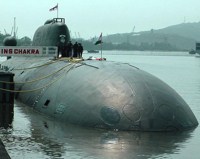Since 1998, a major element of India’s nuclear doctrine has been the development of a nuclear triad: the ability to fire nuclear weapons from land, air and sea. Recent years have seen India concentrating on the sea-based element of its nuclear deterrent, in particular through efforts to develop a ballistic missile submarine (SSBN).
All the major nuclear powers have placed their faith in SSBNs, primarily because they are extremely hard to detect and destroy, hence assuring a state’s retaliatory capability. The fear of a second strike, in turn, helps maintain effective deterrence between nuclear adversaries.
This same logic motivates India’s efforts to complete the nuclear triad. INS Arihant, India’s first indigenous nuclear submarine, was unveiled in 2009 and is presently undergoing sea trials in the Bay of Bengal. Last year, India also leased a nuclear submarine from Russia, primarily to train its navy in the management of nuclear submarines and also to develop operational doctrines for naval nuclear warfare.

